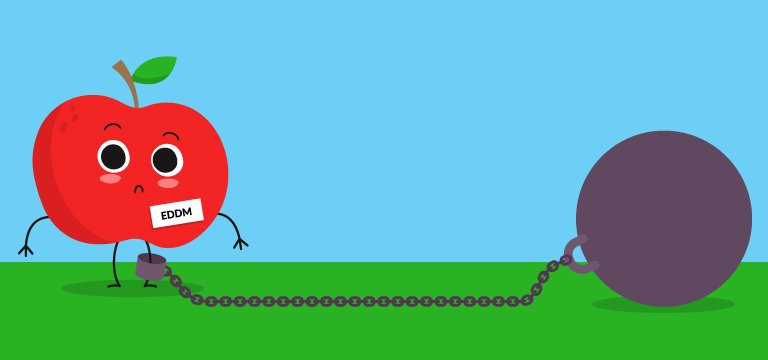If you’re considering Every Door Direct Mail® as the mailing service for your next direct mail campaign, it’s important to understand who you can target. Simply put, targeting refers to who you send your pieces to. Reaching the people who are most likely to respond to your ad helps you make the most of your marketing budget, so targeting is very important.
EDDM® mailings allow you to advertise locally without purchasing a mailing list or permit, but it has its limitations when it comes to targeting. In many cases, a full-service saturation or full-service targeted campaign via a direct mail company or commercial printer is a smarter choice. In this blog, we’ll compare the targeting capabilities of these three mailing options to help you make an informed decision about which one is best for your business.
Who Can I Target with EDDM®?
You don’t need a mailing list to do an EDDM® mailing, which means your pieces mail to every address along a carrier route (a further breakdown of a zip code). Hence the name, “Every Door Direct Mail®.” However, just because you’re mailing to every home in an EDDM® carrier route doesn’t mean you don’t have targeting capabilities. With EDDM®, you can do the following:
- Mail to most residents in a carrier route
- Remove business addresses and PO boxes
- Target carrier routes based on median demographics
The USPS Every Door Direct Mail® tool allows you to filter carrier routes by median age, household size, and income. This means you can select routes that meet the median demographics you’re targeting, rather than those that don’t. Keep in mind that you’re dealing with median numbers (the figures in the middle of a data set), so your pieces will go to some households that fall outside your desired demographics. For example, even if you select all carrier routes with a median age range of 25-30, your pieces will still reach many individuals outside that age range.
EDDM® marketing isn’t the best choice for businesses offering a product or service that’s not applicable to everyone or companies looking to target very specific people. But the good news is there are other service options besides EDDM®, which we’ll explore below.
What’s the Difference Between EDDM® and Saturation Mailing?
Technically, EDDM is a type of saturation mailing, but it’s more limited than a full-service saturation mailing you could get from a direct mail company. With a full-service saturation mailing, you can filter your carrier routes by median age, household size, and income – just like EDDM®. But there are some additional targeting options you can only get from a full-service saturation mailing. With a saturation mailing, you can:
- Remove residential addresses (like apartments, drop addresses, seasonal dwellings, and mobile homes)
The biggest benefit of a full-service saturation mailing is the ability to remove certain residential addresses in addition to business addresses and PO boxes. For example, home service providers looking to drum up new business wouldn’t want to mail to renters, since landlords typically take care of maintenance. In this case, they could remove all apartments and drop addresses to make sure they’re only mailing to people who can actually use their services. This ability to remove residential address types sets a full-service saturation mailing apart from EDDM® and makes it a better choice when you need more targeting options.
If you’d like a more detailed breakdown of the differences between these two services, check out our saturation mailing comparison.
Should I Choose EDDM® or a Targeted Mailing List?
Saturation mailings like full-service and EDDM® are great for targeting broad groups of people. But if your audience is very specific – or if you want to mail to your current customer list – you may need to go with a targeted mailing. With a targeted mailing list, you can:
- Mail to a very specific list of consumers or businesses
Targeted mailing lists are made up of people and/or businesses who match the exact criteria you’re looking for. This means you don’t need to remove any address types (like business addresses or PO boxes) since the list you get already matches your desired criteria. For example, if you want to mail to female golfers between the ages of 45 and 50, you’ll get a list that contains only individuals who meet those requirements.
Targeted campaigns aren’t right for everyone, though. For consumer-facing businesses that offer services anybody can use (like restaurants and auto shops), EDDM® or saturation mailings through a direct mail company are usually a better choice for marketing to prospective customers. Targeted mailing lists can be significantly more expensive than saturation lists, and in some cases, saturation mailings offer the targeting capabilities businesses need at a lower price point.
Conclusion
It’s important to understand the targeting limitations of EDDM® mailings when planning out your direct mail campaigns. While EDDM® can be an affordable and effective option, there are plenty of times when saturation or targeted mailings are the better choice. Ultimately, you should consult with a direct mail expert before choosing a mailing option. They’ll help you figure out the most cost-effective solution for your business and work with you to choose the right service and mailing list to get you the best results.
